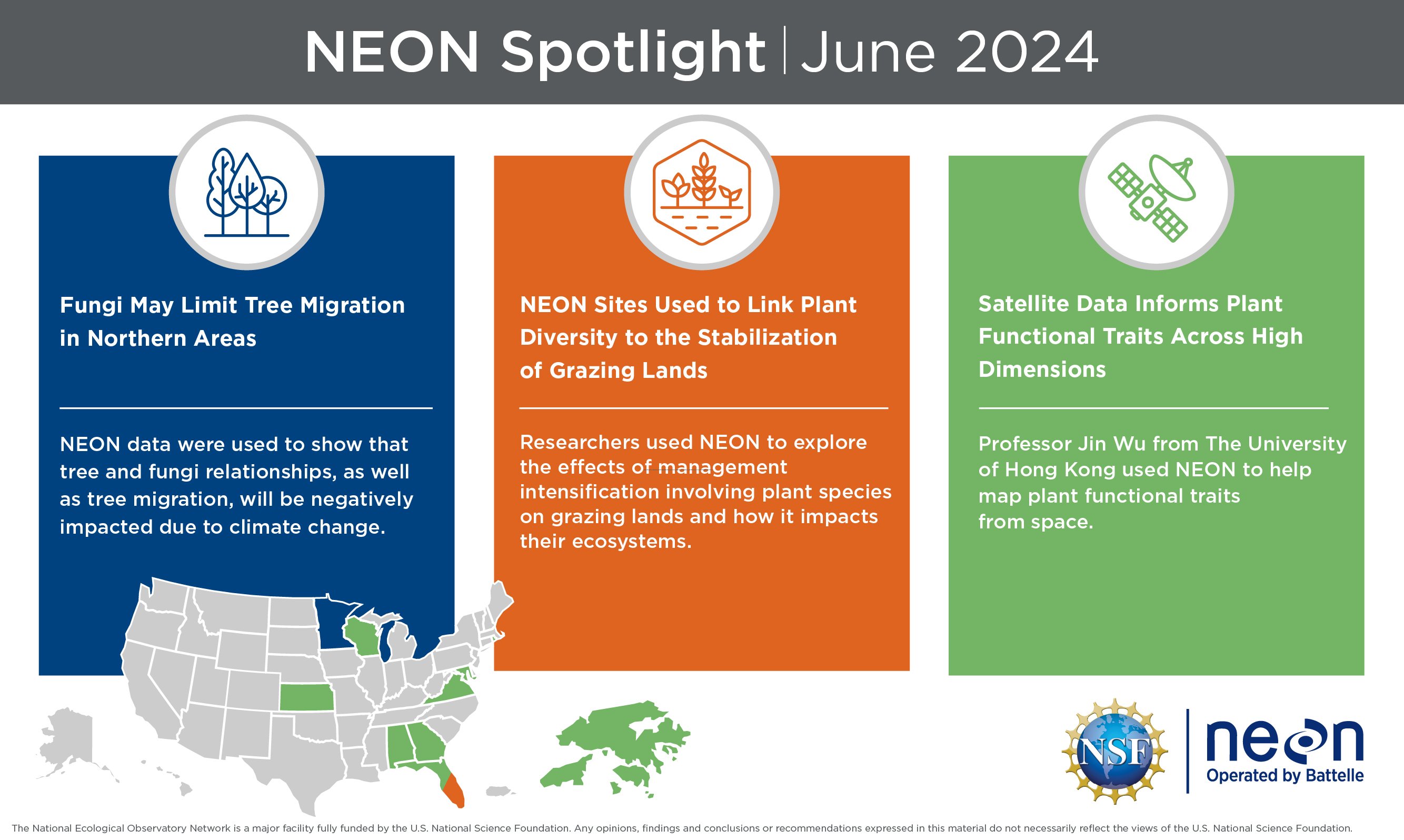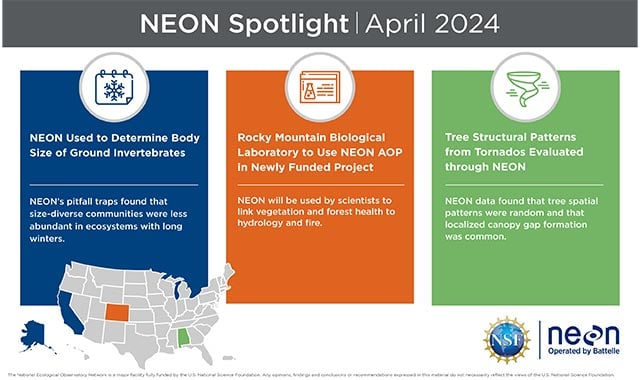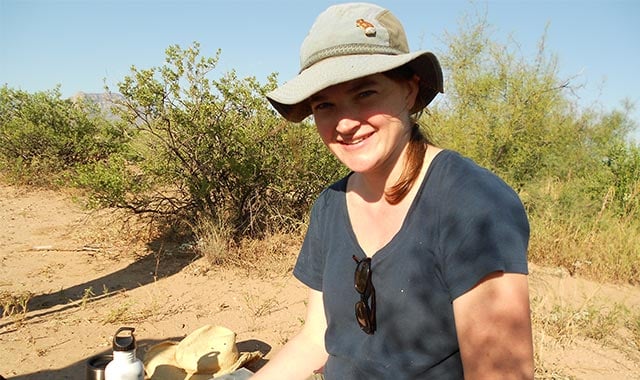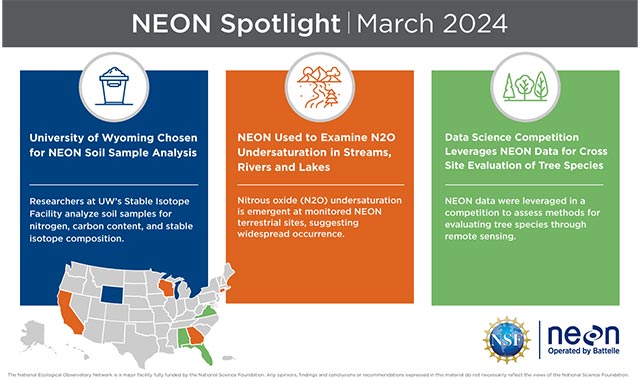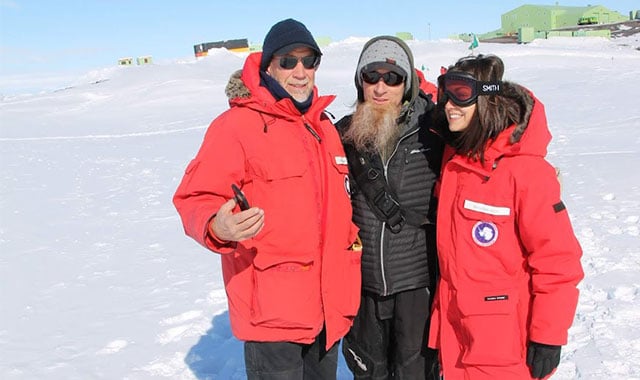November 2023 What’s New with NEON?
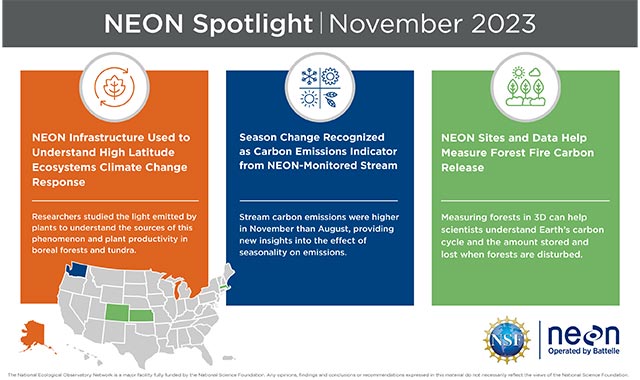
November’s NEON Spotlight highlights three new stories demonstrating how scientists are leveraging NEON data in their efforts to expand the capabilities of ecological science. This month, we are spotlighting how NEON data are used to understand climate change response, measure forest fire carbon release, and recognize season change as a carbon emissions indicator. NEON data continue to be instrumental in advancing our comprehension of the natural world, fueling public knowledge, and sharpening our ability to address pressing environmental challenges.
This Month’s Spotlight
The latest news from NEON includes:
- NEON Infrastructure Used to Understand High Latitude Ecosystems Climate Change Response
In this study, researchers used the NEON Assignable Asset program to measure light released by plants during photosynthesis, called solar induced fluorescence, in order to understand how high latitude ecosystems respond to climate change. Researchers focused on boreal forests and tundra specifically. At the NEON Caribou Creek site in Domain 19 (Central Alaska), they installed FLoX (Fluorescence Box) and monitoring PAM (MoniPam) instruments. MoniPAM instruments were attached to single spruce trees and shone light pulses to measure the fluorescence and photosynthesis at leaf level. The FLoX measures the forest from a broader angle and took measurements of reflected light and chlorophyll fluorescence from a patch of a forest. The data collected allow researchers to gain a deeper understanding of fluoresced light and how it contributes to arctic plants’ productivity and response to climate change.
- Season Change Recognized as Carbon Emissions Indicator from NEON-Monitored Stream
Researchers used Martha Creek, a NEON stream field site located in Washington, to model carbon dioxide emissions during the months of August and November. The stream was in its base flow in the month of August and in its high flow in the month of November. To measure the emissions, researchers collected dissolved samples of glass every 100 meters at the stream in both months. They then compared the predictive physical model equations with gas evasion experiments by modeling it to the stream and calculating stream metabolism. The results of this study suggest that November had a larger amount of carbon emissions from the stream than August, due to the stream network length and area, and bigger discharge. The study implies that seasons are a driver for carbon emissions when it comes to streams, and understanding the nature of streams can help researchers when examining their impact on various ecosystems.
- NEON Sites and Data Help Measure Forest Fire Carbon Release
Fire ecologist Dr. Jennifer Balch from the University of Colorado Boulder used NEON infrastructure and data to study how forests recover after wildfires and their contribution to carbon levels in the atmosphere. Balch and her team used NEON’s Airborne Observation Platform as well as light detection and ranging data (lidar) from NASA’s Global Ecosystem Dynamics Investigation (GEDI). GEDI uses an instrument with lasers to build three-dimensional forest maps. With these tools, the researchers are better able to understand the carbon cycle of the Earth and the amount stored and lost from disturbed forests. The NEON and NASA resources allow Balch and her team to study data from over 600 fires that have burned over 1,000 acres and better understand the impacts of wildfires on climate change.
Sponsored by the National Science Foundation (NSF) and operated by Battelle, NEON is a continental-scale ecological observatory network dedicated to providing high-quality, consistently generated, standardized data that are free and available to all users. By enabling scientists, researchers, and students to address critical questions and understand ecosystem changes over time, the NEON program allows the ecological community to tackle questions and problems at a scale that was not possible before.
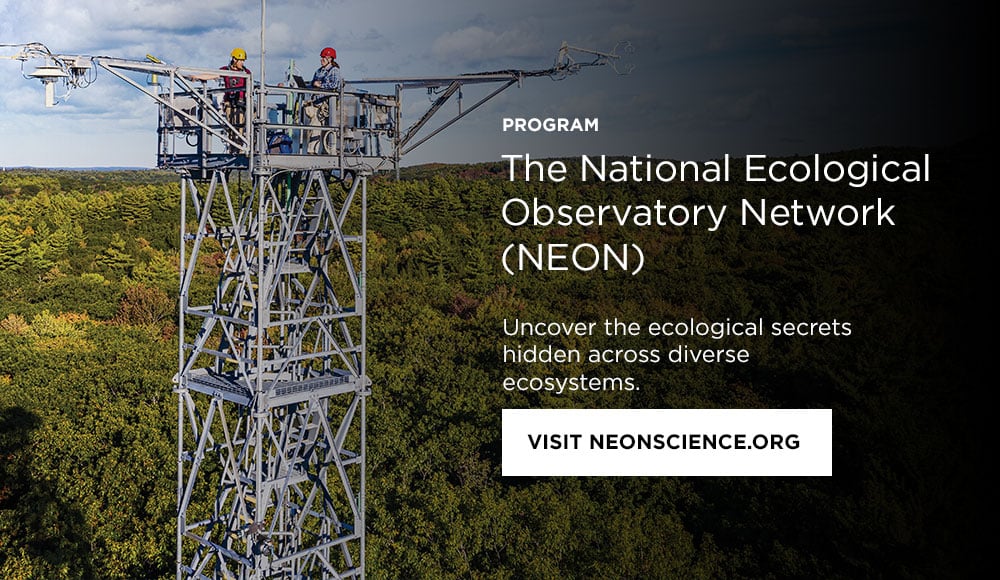
Related Blogs
BATTELLE UPDATES
Receive updates from Battelle for an all-access pass to the incredible work of Battelle researchers.
